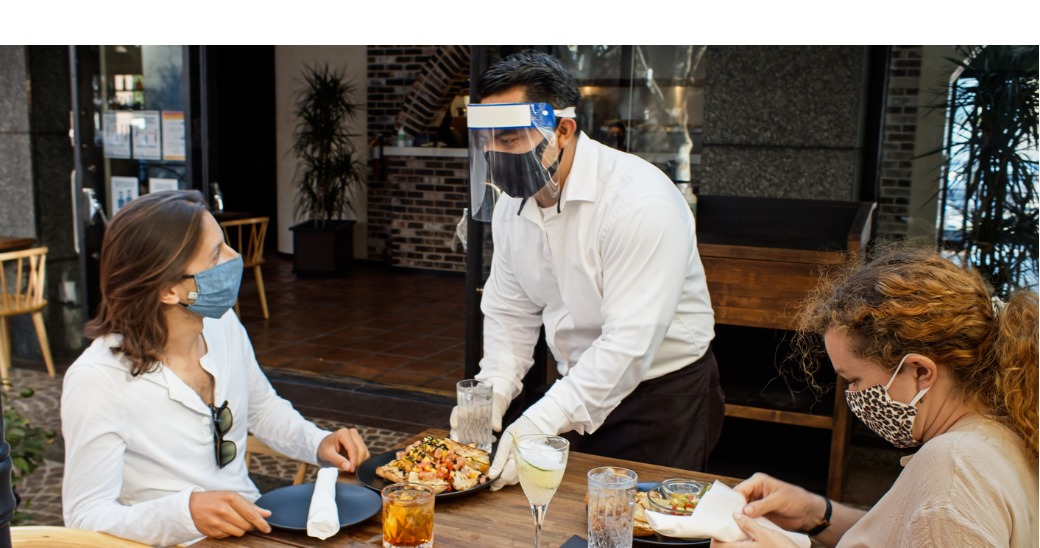Dec 9, 2020 11:48:58 AM
Restaurants | Customer experience | Operations
Dec 9, 2020 11:48:58 AM
Restaurants | Customer experience | Operations

The rapid growth of digital and mobile technologies has made diners expect from restaurants what they expect in all other aspects of their lives. They want an impeccable experience that combines the warmth of human interaction with the efficiency of digitization.
And in 2020, with lockdowns and social distancing measures throwing the industry into a period of uncertainty, your guests’ priorities have changed.
43% of diners say that attention to cleanliness and safety will be a key factor in their decision to return to restaurants. 64% say it’s important to see staff wearing PPE and taking the correct precautions, and 49% want hand sanitizer on tables.
With this in mind, restaurants must work even harder to provide the unique, comfortable and safe dining experience that will keep customers coming in.
The main thing that holds restaurants back in their efforts is poor task execution. When brand standards are not upheld, guest experience suffers.
RELATED: [eBook] Restaurant Recovery: 4 Ways to Cut Costs and Boost Performance
Here are 3 issues that arise when task execution isn't perfect, and how to stop them from happening:
As the way we interact with others and use public spaces has radically changed, many restaurants have had to shut their doors - and those that haven’t are now having to adapt to a very different reality.
One of the key changes in consumer behavior in 2020 is greater concern with health and safety. 23% of customers are still too nervous to dine in at a restaurant until a COVID-19 vaccine has been rolled out, and even those that do want to aren’t ready to go back to the full pre-pandemic dining experience.
If a customer has an experience that makes them feel their safety is compromised - for example, if they are seated too close to other diners or staff aren’t wearing the appropriate PPE - they are unlikely to come back.
A lot of the things that can go wrong aren’t necessarily the fault of your frontline teams. For example, they might have forgotten to hang a social distancing poster because it wasn’t made clear to them that it was a legal requirement to do so.
That’s why making health and safety guidelines clear for frontline teams, and closely monitoring their implementation, is so crucial. Having insight into how compliant each site is with social distancing measures ensures that these issues are picked up and remedied immediately.
Guests can then comfortably enjoy their visit knowing that their health is not at risk, and they will be willing to return.
RELATED: [Interview] How Urban Plates Is Serving up Better Operational Processes with YOOBIC
Picture this. You go out for dinner with your family one evening and have a fantastic experience - great food, great service, great atmosphere. You tell your friends constantly how amazing it was, and book a table so they can experience it for themselves.
Unfortunately, your second trip is nothing like the first. Your server brings you and your friends the wrong meals, and when you eventually get the right ones they’re cold and disappointing. You all leave feeling unsatisfied, and your friends never trust you to pick the restaurant again.
Chances are, you weren't the only one who had the same experience.
In 2020, with the hospitality industry in such a difficult spot, restaurants cannot afford to have such inconsistencies in their guest experience. With consumers already on edge when in public spaces, it has to be worth their while to come into a restaurant, and they have to know exactly what kind of experience they will get across the board.
Where in the past the focus was on creating a unique and exciting dining experience, frontline staff now also need to ensure every site upholds health and safety measures.
And the best way to achieve that is by digitizing restaurant operations and internal communications so that each restaurant knows exactly what they need to do and how to do it, and HQ has a full overview of task execution across their network.
RELATED: How BurgerFi Uses Internal Communications to Improve Employee Experience With YOOBIC
HQ regularly sends out meticulously-planned guidelines and strategies - standards which are set to ensure a consistent, high-quality guest experience across the entire site network.
Every individual restaurant is trying its best, but with fewer staff on the rota and more tasks to complete, frontline employees have a heavier workload than ever. As a result, brand standards aren’t always being properly monitored and will inevitably slip.
This is a major problem, because the image your guests get from one of your restaurants, will impact their perception of your brand and determine whether or not they want to spend their time and money at your establishment.
Consumers today have an overwhelming amount of choice, so if they’ve had a disappointing experience, they might never go back to that restaurant again. They will probably also tell their friends about the bad experience and discourage them from dining there, too.
Restaurant networks need to be a perfectly oiled machine, using everything at their disposal - from digitized task management, to internal communications, to training - to nip any problems in the bud and ensure perfect execution of their brand standards across the board.
RELATED: How to Manage Restaurant Operations Remotely
---
YOOBIC's digitized task management platform helps restaurant chains like BurgerFi, Urban Plates and BChef provide a safe and comfortable guest experience, despite the challenges 2020 has thrown at them.
Search the blog

See why 350+ businesses are using YOOBIC
YOOBIC creates a better everyday working experience for frontline teams while helping businesses drive performance at scale.
PRODUCT
See why 350+ businesses are using YOOBIC
YOOBIC creates a better everyday working experience for frontline teams while helping businesses drive performance at scale.